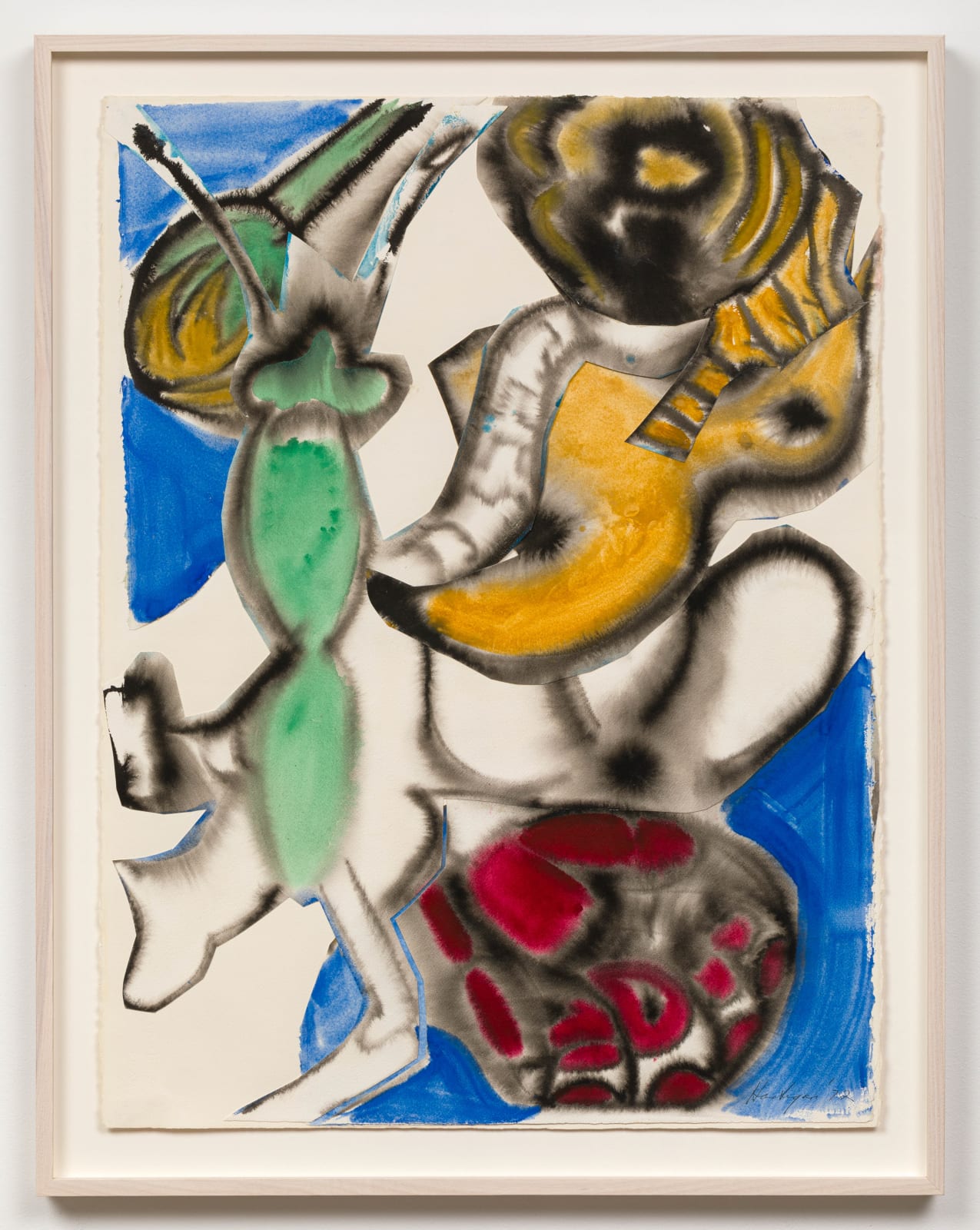






Grace Hartigan
Tide Pool, 1972
Watercolor and shaped paper collage
76.2 x 57.1 cm
30 x 22 1/2 in
30 x 22 1/2 in
Further images
Grace Hartigan shared a social and artistic milieu with Jane Freilicher, but had a wilder streak. ‘No rules,’ Hartigan said, ‘I must be free to paint anything I feel.’ Sparked...
Grace Hartigan shared a social and artistic milieu with Jane Freilicher, but had a wilder streak. ‘No rules,’ Hartigan said, ‘I must be free to paint anything I feel.’ Sparked by seeing Jackson Pollock’s drip paintings, she became a second-generation Abstract Expressionist in the 1950s. Hartigan was a restless experimenter, responding to her different working environments, introducing legible images into her paintings through the 1960s and beyond. In a review in Artforum, Donald Kuspit wrote that Hartigan’s 'Tide Pool' is ‘a wonderful tumble of abstract figures in a heaven of pure-white light and cerulean’.
Lydia Yee comments, “'Tide Pool' (1972) blends watercolour and collage, taking the shapes of gastropods, algae and other marine life intermingling between shards of blue. ‘I perceive the world in fragments,’ Hartigan noted, ‘Somehow, in painting I try to make some logic out of the world that has been given to me in chaos’.”
Grace Hartigan (1922–2008) lived and worked in New York, sharing a social and artistic milieu with Jane Freilicher. A second-generation Abstract Expressionist in the 1950s, Hartigan was a restless experimenter, introducing legible images into her paintings through the 1960s and beyond. Her work featured in 'Action, Gesture, Paint: Women Artists and Global Abstraction 1940–1970' at the Whitechapel, London (2023) and is held in museum collections across the US.
Lydia Yee comments, “'Tide Pool' (1972) blends watercolour and collage, taking the shapes of gastropods, algae and other marine life intermingling between shards of blue. ‘I perceive the world in fragments,’ Hartigan noted, ‘Somehow, in painting I try to make some logic out of the world that has been given to me in chaos’.”
Grace Hartigan (1922–2008) lived and worked in New York, sharing a social and artistic milieu with Jane Freilicher. A second-generation Abstract Expressionist in the 1950s, Hartigan was a restless experimenter, introducing legible images into her paintings through the 1960s and beyond. Her work featured in 'Action, Gesture, Paint: Women Artists and Global Abstraction 1940–1970' at the Whitechapel, London (2023) and is held in museum collections across the US.






